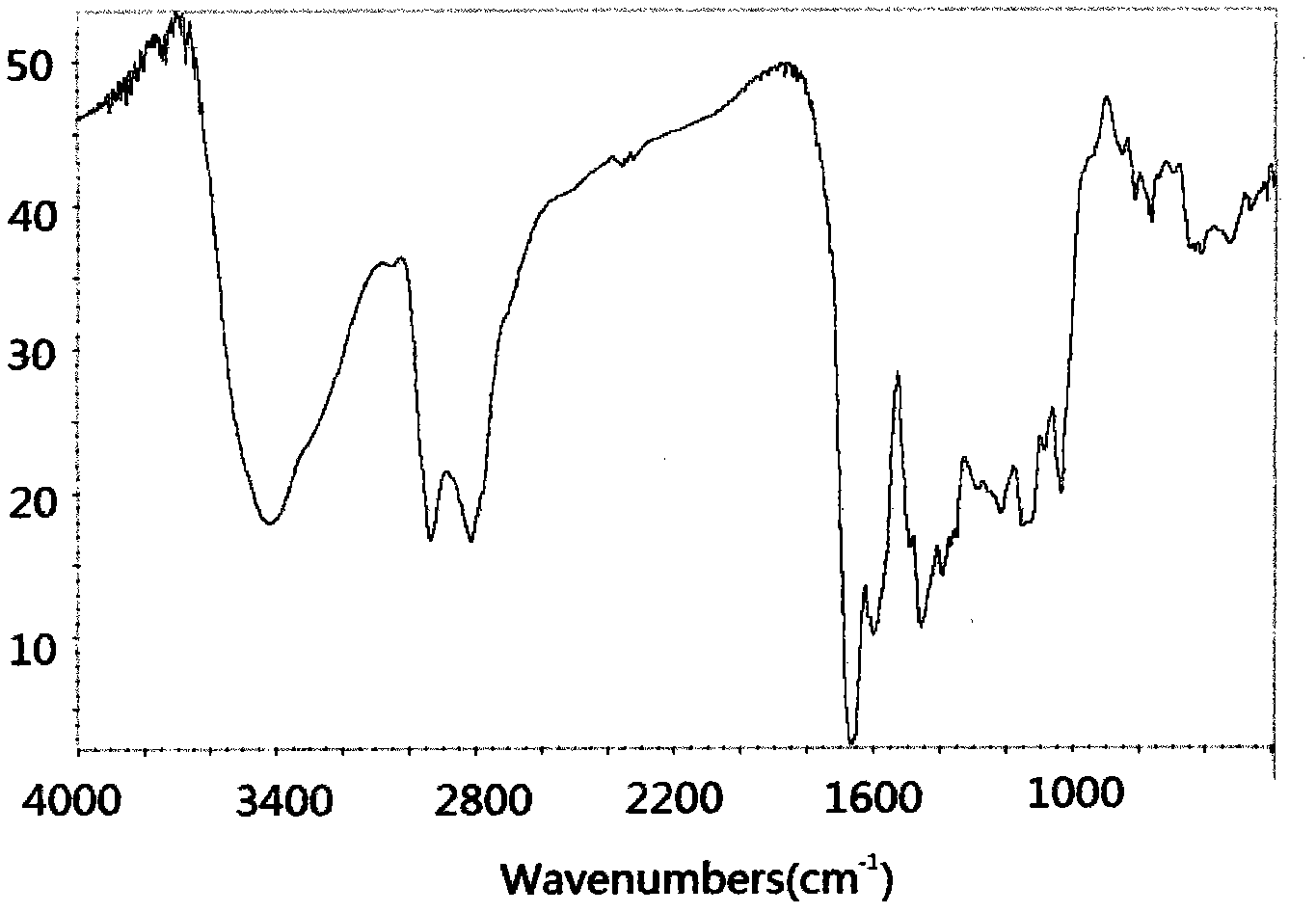Method for preparing lignin amine from cyclohexanone wastewater
A technology for cyclohexanone wastewater and wastewater, which is applied in chemical instruments and methods, water/sewage multi-stage treatment, water/sludge/sewage treatment, etc. Problems, the effect of realizing reuse
- Summary
- Abstract
- Description
- Claims
- Application Information
AI Technical Summary
Problems solved by technology
Method used
Image
Examples
Embodiment 1
[0034] Example 1: Take 60 g of cyclohexanone wastewater (pH 9, COD 5000 mg / L) in a three-necked flask, add 16 g of alkali lignin, and stir to dissolve. Add 27g of formaldehyde solution with a mass concentration of 37% to the waste water, and stir for 15 minutes to dissolve it. Add 16 g of triethylenetetramine to the above waste water, stir for 10 min to dissolve it; raise the temperature to 85° C., and react for 3 hours to obtain a lignin amine solution. The infrared spectrum of the obtained product is as figure 1 As shown, the structure is consistent with the lignin amine prepared with water as solvent.
Embodiment 2
[0035] Example 2: Take 60 g of cyclohexanone wastewater (pH 11, COD 10000 mg / L) in a three-necked flask, add 12 g of alkali lignin, and stir to dissolve. Add 8g of acetaldehyde to the waste water, stir for 13min to dissolve it. Add 20 g of diethylenetriamine to the above wastewater, stir for 15 minutes to dissolve it; raise the temperature to 75° C., and react for 5 hours to obtain a lignin amine solution. After the reaction, the main pollutant cyclohexanone in the waste water was measured, and its concentration was reduced to less than 10% of that before the reaction, which indicated that the effective components in the waste water could participate in the reaction.
Embodiment 3
[0036] Example 3: Take 60 g of cyclohexanone wastewater (pH 13, COD 50000 mg / L) into a three-necked flask, add 20 g of alkali lignin, and stir to dissolve. Add 27g of formaldehyde solution with a mass concentration of 37% to the waste water, and stir for 15 minutes to dissolve it. Add 25 g of tetraethylenepentamine to the above wastewater, stir for 15 minutes to dissolve it; raise the temperature to 80° C., and react for 2 hours to obtain a lignin amine solution.
PUM
 Login to View More
Login to View More Abstract
Description
Claims
Application Information
 Login to View More
Login to View More - R&D
- Intellectual Property
- Life Sciences
- Materials
- Tech Scout
- Unparalleled Data Quality
- Higher Quality Content
- 60% Fewer Hallucinations
Browse by: Latest US Patents, China's latest patents, Technical Efficacy Thesaurus, Application Domain, Technology Topic, Popular Technical Reports.
© 2025 PatSnap. All rights reserved.Legal|Privacy policy|Modern Slavery Act Transparency Statement|Sitemap|About US| Contact US: help@patsnap.com

